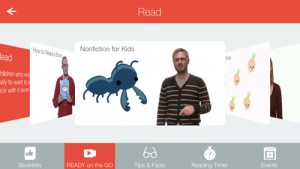
Often when you are deciding whether to purchase an app, you’ll see a number of reviews for it in the app store. Have you noticed how uninformed many of these reviews are? Anyone who has purchased an app can contribute reviews. Often people will dash off something without understanding what the app was meant to do. Others use the review to send in their technical support questions.
Sometimes developers even write bad reviews of their competitor’s apps, a practice that Apple is working to prevent. It’s difficult not to be influenced by these reviews, but take them with a grain of salt. Instead, it’s better to do a quick search for reviews of the app in trusted publications.
I encourage librarians to review apps—both in the app stores and in your own sources of professional reading, such as journals and blogs. The quality of many existing reviews is low. Librarians with knowledge of the capabilities of mobile devices are in a good position to evaluate apps for their communities and write well-informed reviews.
In my Library Technology Report “Selecting and Evaluating the Best Mobile Apps for Library Services,” I include an “app review checklist” as a guide to what to include when reviewing apps. For an example of a well-written review, see “Adobe Sketch and Line Master Drafting and Sketching on the iPad,” by Serenity Caldwell in Macworld. Caldwell’s review excels with its discussion of the intended audience, what the app can do that can’t be done so easily on desktop computers, and how it compares with similar apps.
For short reviews that will benefit many people, contribute your review directly to the app store where you purchased the app. This document from Apple gives instructions on how to submit your review: “iTunes Store: Writing a Review.” For Android apps, look up your app on the Google Play store and click the “write a review” button. Your review will be connected to your Google+ profile, and you’ll see reviews written by people in your Google+ circles first.
For more in-depth reviews, consider contributing them to the publications that you usually write for, such as professional journals, blogs on your topics of expertise, and your town or university newspapers and newsletters.
A good example of what librarians can do to share their app expertise with their community is Little eLit, which offers app reviews and other resources to those who work with young people. See its list of apps for storytime, book apps, and apps for other library programs. It also provides a list of criteria for evaluating apps for kids. It would be great to see more collaborative sites like this one built for specific audiences or topics.
Read reviews not only to find useful apps but to learn from a variety of approaches. A few sources to check out are AppAdvice AppLists, Android Apps Review, Beautiful Pixels, and the Best Android App series in the Guardian, Mac Stories, and Macworld. I list many more in my Library Technology Report.
If you would like to learn more about how apps can help your users and how to recommend and write reviews of apps, sign up for the online course “Apps for Librarians: Empower Your Users with Mobile App Literacy.”
Download the free publication “10 Tips for Finding the Best Apps” when you subscribe to the Mobile Apps News.


